Cats remain the most popular pets around the world. Among the large number of breeds of these animals, Asian representatives of the cat family are especially popular. The Singaporean cat is popular among breeders due to its external attractiveness, flexible disposition and small size, in the light of which it perfectly coexists with a person in the same home.
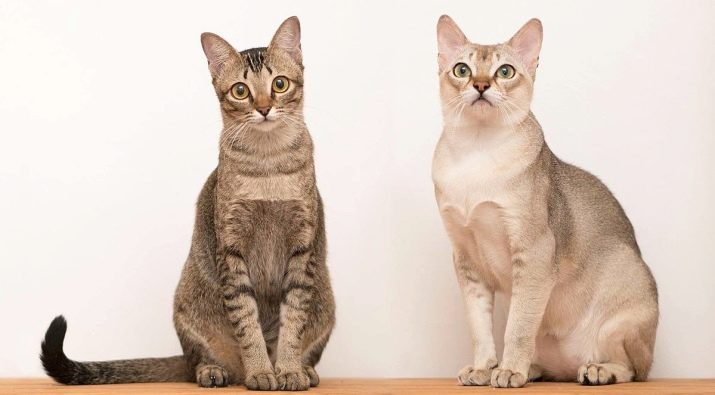
Origin history
Singapura cat or Singapore - a breed of pet, which is notable for its modest size. For quite some time it was these representatives of the cat family that were considered the smallest in the whole world, which is why they were listed in the Guinness Book of Records. Today, Singaporean pets belong to the class of elite domestic animals, so their population around the world stands out with rather modest numbers.
The ancestors of Singapore are cats that live on the island of the same name and have not gained popularity among the indigenous population, since the gutters were chosen as their habitat. Work on the modernization of the sewer system caused the death of a large number of these animals. However, a happy event allowed the breed not only to survive, but also to fundamentally change the attitude towards such cats. The animals attracted the attention of scientists who were on the island at that time, who transported several individuals to America, where further work on breeding the breed was carried out. In 1974, the descendants of previously removed representatives of Singaporean cats were brought back, after which the animals began to take part in exhibitions.
Some sources also reported that Singapore owes its origin to the Burmese and Abyssinian breeds, since all the same scientists worked on them.
But animals have already gained particular popularity among breeders, firmly securing the right to become their favorite pets in human dwellings around the world.

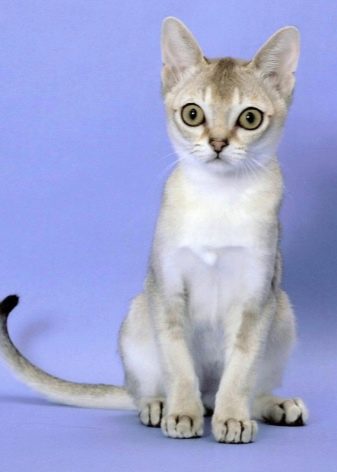
Description
In addition to their small size, Singapore cats also have a rather modest mass: for example, the weight of adult animals varies from 500 grams to a kilogram. As for the physique of pets, even a small mass does not prevent animals from having a muscular torso with a short but strong neck. The limbs and tail are of normal length, however, there are certain requirements for the color of these parts of the body. There should be no stripes on the outside of the paws, and the end of the tail should have a darker shade of hair.
The external features of cats of this breed make it possible to consider them cute creatures - this is due to the presence of large almond-shaped eyes, with an expression of slight surprise. The head of cats is round, the nose is wide and blunt. The pupils may be yellow or green. Ears are small, pointed at the ends.
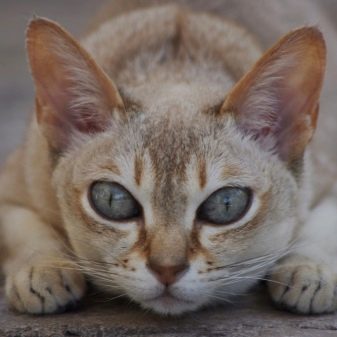
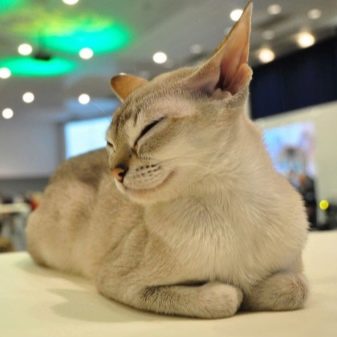
The main distinguishing feature of the Singapore breed of cats is their color, in purebred animals it is only one. Moreover, there are a lot of options for describing it - from the color of sunlight to a shade of golden sand. The standard for cat breeds is cream-colored wool with a brown tick, which will be concentrated on the head, along the back and on the tail. This color is called sepia agouti. The requirements regarding the color of the fur of cats also affect the number of stripes on the hairs, which should be no more than two, and the root will always be lighter than the end.
Cats of this breed are short-haired animals, but the tactile sensations when stroking them suggest that the fur coat of pets is very silky and soft.
The undercoat of the representatives of the cat family is absent, in light of which the wool is tightly attached to the body.

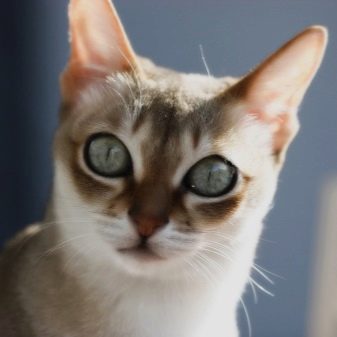
A characteristic feature in the appearance of Singaporean cats should include “rims” around the eyes and nose, the nose of the animal will be painted in salmon color, while the pads on the extremities will appear pink with a brown tint. The contrasting borders on the cat's face resemble the color of a cheetah.
According to international standards, purebred animals must have the following specific differences:
- the body will be rectangular with smooth corners;
- limbs should not be long;
- nose with chin should be in line;
- the ears will expand at the base, they are located at an average distance from each other;
- the slanting of the eyes is more pronounced to the outer corner, the distance between them is equal to the width of the eye itself;
- the tail will be of medium length with a blunt tip, its length when located along the body of the animal should reach the cat’s shoulder joint.
As a rule, no more than four kittens are born in Singapore cats, while the life expectancy of a pet varies between 12-15 years.
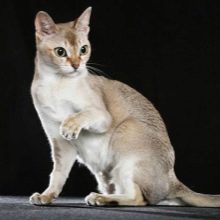
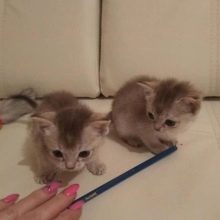

Character Features
According to the reviews of the breeders, cats stand out for their complaisant disposition, are friendly with respect to humans. However, even when living together with people, cats of this breed tend to maintain their independence and authority. In this case, the animals are very affectionate, willingly spend time with the owner, demonstrate their tenderness. Kittens very quickly become attached to their master, therefore difficulties with adaptation to a new place of residence among breeders, as a rule, do not arise.
Cats have a very developed maternal instinct, so they will not only care about their offspring, but also about the children of their master.This fact allows you to get Singapore cats even in large families and in the presence of small children.
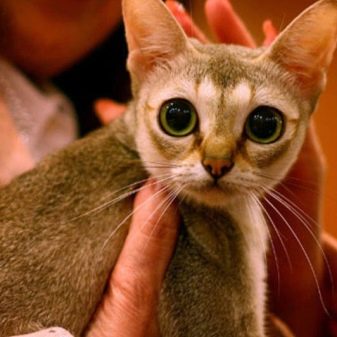
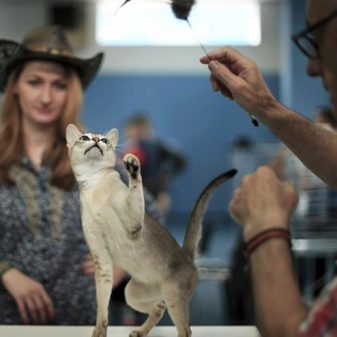
Cats of this breed are social animals that are willing to make contact even with strangers. Pets are very curious and playful, and they show aggression only as a last resort - in order to protect themselves. Representatives of the cat family remain active and playful in nature until they are old, so it is quite difficult to find a Singapore cat outside the game or movement. Animals willingly enter games with other pets, regardless of whether it is a dog or even a decorative rat.
Singapore cats, with all their independence, are very attached to their breeder, so they can be invariable companions in all his domestic affairs. Animals are smart, so they can be easily trained. If desired, such a pet will be able to teach simple commands, also tailed family members can remember their nickname and respond to it.
Singapore meows very rarely, animals are unobtrusive in terms of living together, therefore, in the absence of the owner, they are able to find for themselves something to do and have fun. In domesticated cats, a congenital hunting instinct has been preserved, light weight and size will not become an obstacle if you want to catch prey.
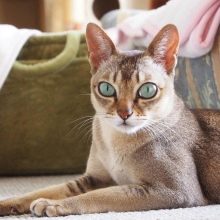
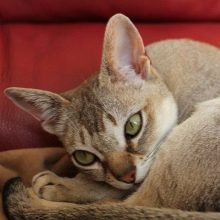
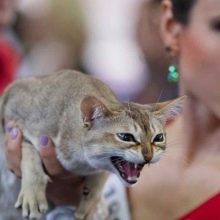
Conditions of detention
The main point regarding the maintenance of the animal is a properly selected diet. So, Singapore food must be strictly controlled, because animals can eat uncontrollably, which will cause excess weight. For those cats that will feed on industrial feed, it is recommended that the breeder strictly control the cat's daily intake, avoiding an increase in its amount. For one kilogram of animal weight, more than 25-30 grams of feed per feed will be required. The optimal industrial feed will be products that contain no more than 30% meat ingredients. With this kind of nutrition, a cat should always have free drinking water.
Pets that will eat regular food, you need to provide all the necessary vitamins and minerals. That is why in the diet of cats should be present such products:
- boiled lean meat;
- cereals;
- quail eggs;
- cottage cheese and sour cream of medium fat content;
- boiled vegetables;
- fruits.
Singapore should be fed 5-6 times a day; if the pet is still small, then wet or canned products in the form of paste are selected from industrial feeds. Two feedings per day will be sufficient for an adult.

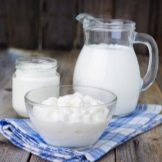
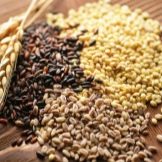

There is a list of products that are contraindicated for animals:
- sausages and smoked meats;
- pork;
- River fish;
- any milk;
- confectionery.
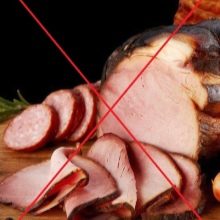

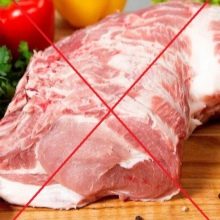
As a supplement to natural food, the cat owner is recommended to use mineral and vitamin complexes, which can be purchased at the veterinary pharmacy. As the experience of keeping Singapore cats shows, premium foods are more suitable for them from industrial feed.
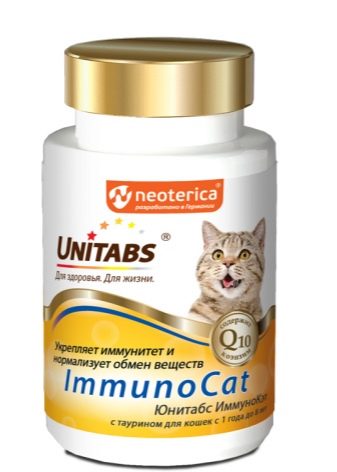
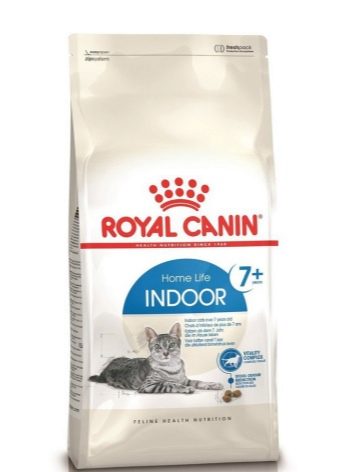
For the hair of the animal special care is not required: as a rule, cats cope with hygiene on their own, however, to improve the appearance of the hair, the breeder sometimes needs to comb the pet. This is necessary to remove dead hairs. Typically, such manipulations are performed once a week. Shedding in animals takes place without any particular inconvenience for the breeder, most often the owner does not even notice the beginning and end of this process.
Singaporean cats do not need bathing. Such a need may arise only if a small pet participates in specialized exhibitions. The ears of the animal require attention, because they stand out for their size, due to which they become a kind of target for dust and other contaminants.Each week, the owner should inspect his cat and remove accumulated dirt with a damp cotton pad; You can use cotton swabs and a special ear cleaner that you can purchase at the pet store.
The eyes require more frequent care, so they are treated with wet sponges daily, it is also allowed to use decoctions of chamomile, calendula or St. John's wort.
Today in veterinary pharmacies you can find wet wipes that are designed to care for the eyes of pets.
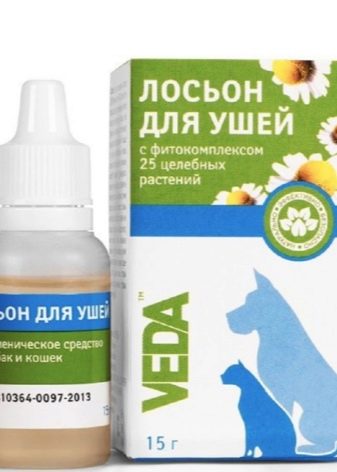
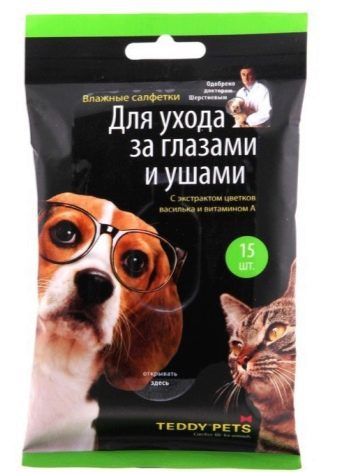
A breeder of Singaporean cats will need a claw cutter, which will have to cut the grown claws of a small pet as they grow. Typically, such procedures are performed twice a month. Also, the animal can help itself to grind them off - for this, it is worth placing two or three claws in the home.
Hygiene measures relating to Singapore, involve caring for the oral cavity of the animal. Teeth are cleaned several times a week with a soft brush.
These animals are distinguished by innate cleanliness, so they quickly learn to cope with the need for a specially designated tray. However, breeders of this breed recommend that inexperienced owners purchase a closed design for the animal, because during these periods it will need privacy. As a rule, animals adapt to using the toilet with any filler.
Due to the developed intelligence of the animal, the pet will be able to relieve itself immediately in the toilet. For these purposes, the owner is advised to purchase a special pad.
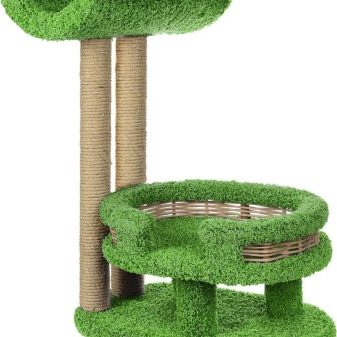
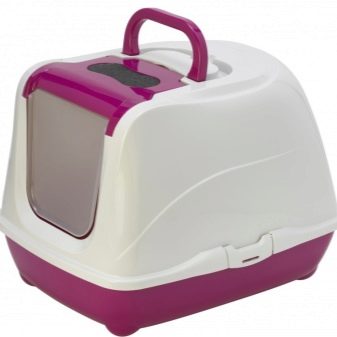
Since the animals are quite active and playful, the breeder will need to provide leisure for small cats in the home. In order for the animal to have something to occupy itself with, it is better for him to install various ladders, tunnels in the house, to purchase several toys, houses and hammocks.
Singapore cats can be taken for a walk, but in this case it is worth remembering that animals react very poorly to cold and drafts. That is why it is recommended to go out with the animals only in the warm season.
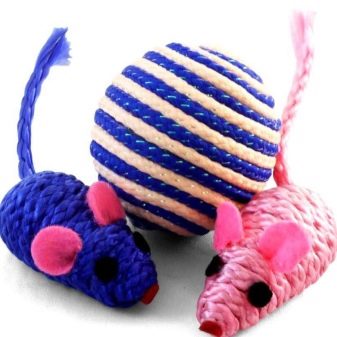
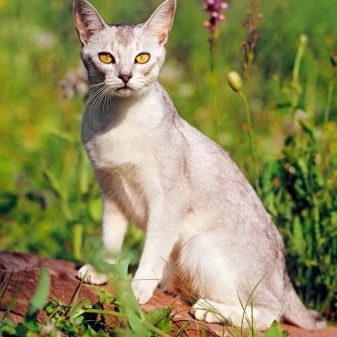
Health
In a miniature breed of cats, maturation and development are quite slow. Usually, Singapore is fully growing closer to 24 months. However, even such a leisurely development does not prevent the animals of this breed from being famous for their excellent health. Among the common problems, hypersensitivity to vaccination can be noted, therefore, all vaccinations with Singapore should be done only in good veterinary clinics. Deworming and professional examinations for miniature pets are mandatory.
In order not to provoke the occurrence of health problems of your pet, you should avoid drafts in the room where the cat lives.
Signs that the animal has caught a cold will be:
- discharge from the nose and eyes, which the owner should notice during the daily hygiene procedures;
- apathy and immobility, which are unusual for this breed;
- sneezing and fever.
The presence of at least one of the above symptoms is a good reason for immediately contacting a veterinarian. Self-medication in this case is not recommended.
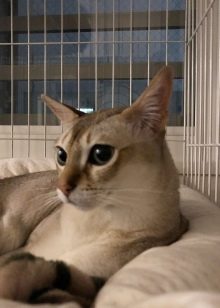

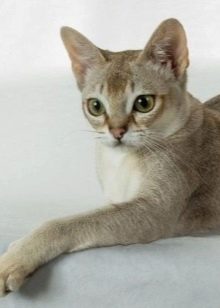
It is worth highlighting the main ailments that can occur in a breed in the light of the lack of genetic diversity.
Infertility and inertia of the uterus
Most often, ailments affect females. As a result of the characteristics of the muscle tissue of the animal’s organs, which are not able to contract in the proper rhythm and with the proper strength, cats may experience problems with natural birth. In this case, pregnant animals undergo a cesarean section.
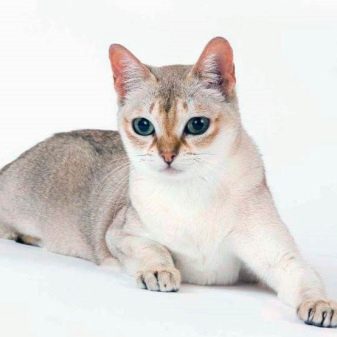
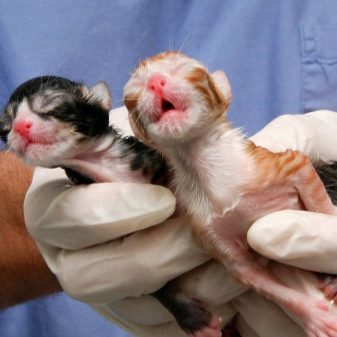
Pyruvate kinase deficiency
This ailment concerns genetic malfunctions, as a result of which a deficiency of the glycolytic enzyme is observed in the body of the pet, which causes hemolytic anemia.Signs of such a disease will be changes in the behavior of the animal, when the cat becomes lethargic, appetite worsens, hair loss occurs. Such a disease can be sluggish, however, there are cases of the rapid development of the disease, which can become a serious threat to the life of a feline.
In cats of the Singapore breed, defects in appearance can also occur. These include:
- defects in the structure of the tail, which will be noticeable only when probing;
- dark color of villi at the very base;
- gray color of animal fur coat.
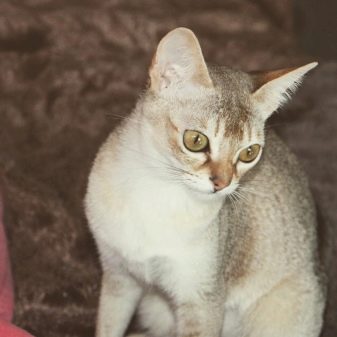
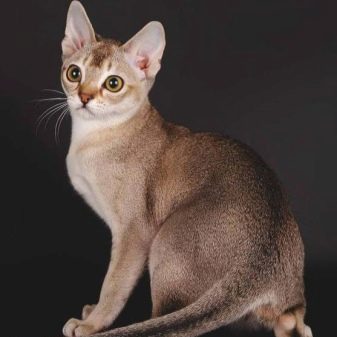
See how to keep Singapore cats in the next video.


































